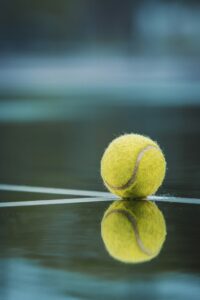Perfecting Your Shots: Adjusting to Diverse Padel Wall Surfaces
3 min read
Perfecting Your Shots: Adjusting to Diverse Padel Wall Surfaces
Introduction
Padel is a fantastic sport that combines elements of tennis and squash, played on a smaller court with a solid glass wall surrounding it. This unique feature of padel makes it essential for players to learn how to adapt their game to different types of wall surfaces. Whether it’s a concrete wall, a glass wall, or even a metal fence, understanding how the ball behaves on different surfaces can give you a crucial edge in your matches. In this article, we will explore the various techniques and tips to help you master the art of adjusting your shots according to different padel wall surfaces.
Understanding the Basics
Before delving into the specifics, it’s essential to have a solid understanding of the fundamental principles that govern the ball’s behavior on different wall surfaces. The speed, angle, and spin of your shots can all be influenced by the surface you’re playing on. By understanding these principles, you’ll be able to make the necessary adjustments and take your game to the next level.
Concrete Walls: Solid yet Predictable
Concrete walls are the most common type of wall surface in padel courts across the world. They provide a solid and predictable rebound, making it easier for players to anticipate the ball’s trajectory. However, it’s crucial to be aware that the ball may lose some speed upon impact with a concrete wall. To compensate for this, aim to hit the ball slightly harder when playing against such surfaces. Harness the rebound power of the wall to create more aggressive shots, allowing you to surprise and overpower your opponents.
Glass Walls: The Temptation of Transparency
Playing against a glass wall can be both exciting and challenging. The transparent nature of the surface adds an extra layer of complexity to the game. When hitting against a glass wall, it’s important to focus on your shot placement and avoid hitting the ball too hard. The glass can create unexpected angles and deviations, making it crucial to pay close attention to the ball’s trajectory after it hits the wall. Developing a good sense of spatial awareness is essential in mastering your shots against glass walls. Keep the ball low and close to the wall when playing against this surface for increased control and accuracy.
Metal Fences: Overcoming the Obstacles
Some padel courts have metal fences as wall surfaces, which can present unique challenges. When playing on metal fences, the ball tends to bounce off at a faster pace compared to other surfaces. This increased speed can catch players off guard, leading to difficult returns. To navigate this challenge, focus on maintaining a balanced stance and perfect your timing. As the ball rebounds off the metal fence, make sure to react quickly and adjust your shot accordingly. With practice, you’ll be able to turn the high rebound speed to your advantage and surprise your opponents with lightning-fast shots.
Conclusion
As a padel player, your ability to adapt your game to different wall surfaces is crucial for achieving success on the court. By understanding the unique characteristics of different surfaces, such as concrete walls, glass walls, and metal fences, you can make the necessary adjustments to your shots and gain a competitive edge. Remember to focus on power and aggressiveness against concrete walls, precision and control against glass walls, and adaptability and quick reflexes against metal fences. With practice and experience, you’ll become a master at adjusting your game to diverse padel wall surfaces, setting yourself up for victory on any court!







